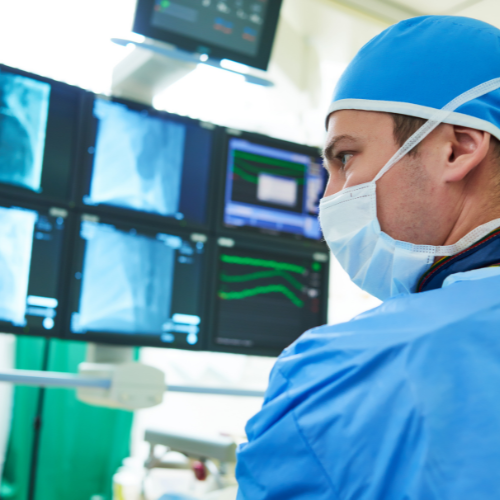About
The Radiologic Technology program prepares students to become entry-level radiologic technologists. Students develop technical skills in diagnostic imaging through classroom instruction, lab demonstrations, and clinical application—all with a focus on real-world experience.
The primary role of the radiographer is to provide diagnostic images of the structure and function of anatomy to assist the physician in the treatment of injury and disease. Graduates are prepared with the technical skills necessary to perform a variety of diagnostic radiographic examinations. Examples of examinations performed include chest, upper and lower extremities, spine, ribs, skull, gastrointestinal, genitourinary, and reproductive systems.
The UAA Radiologic Technology Program is an Associate of Applied Science degree program and is delivered to select Alaska communities throughout the state. Students who apply to a distance site must follow the same admissions process as those students applying to the Anchorage campus, including being admitted to the University of Alaska Anchorage as a degree-seeking student. Students who are accepted at a distance site attend classes on UA campuses in those communities through video conferencing. Distances students are required to attend an entire clinical practicum in Anchorage.
Organization
University of Alaska Anchorage (UAA)
The University of Alaska Anchorage (UAA), nestled in the bustling city of Anchorage, Alaska, is a prominent public university offering a unique educational experience amid the breathtaking landscapes of the Last Frontier. Students at UAA benefit from its prime location, which provides unparalleled access to industry partnerships, innovative Arctic research opportunities, and a myriad of outdoor recreational activities unique to the Alaskan environment. The diverse student body hails from various parts of Alaska and around the globe, creating a vibrant and multicultural campus atmosphere.
UAA features extensive academic offerings with over 100 degree and certificate programs across its colleges, such as Arts and Sciences, Business and Public Policy, Engineering, and Health. Particularly noteworthy is the Alaska Native Studies program, reflecting UAA's commitment to integrating Indigenous knowledge into its curriculum. The university's robust research infrastructure supports a wide array of faculty and student initiatives, enhancing the academic experience. UAA's community outreach efforts and economic contributions to Anchorage further highlight its role as a vital educational and cultural hub. Moreover, the Seawolves, UAA's athletic teams, participate in numerous NCAA sports, adding dynamism to campus life.
